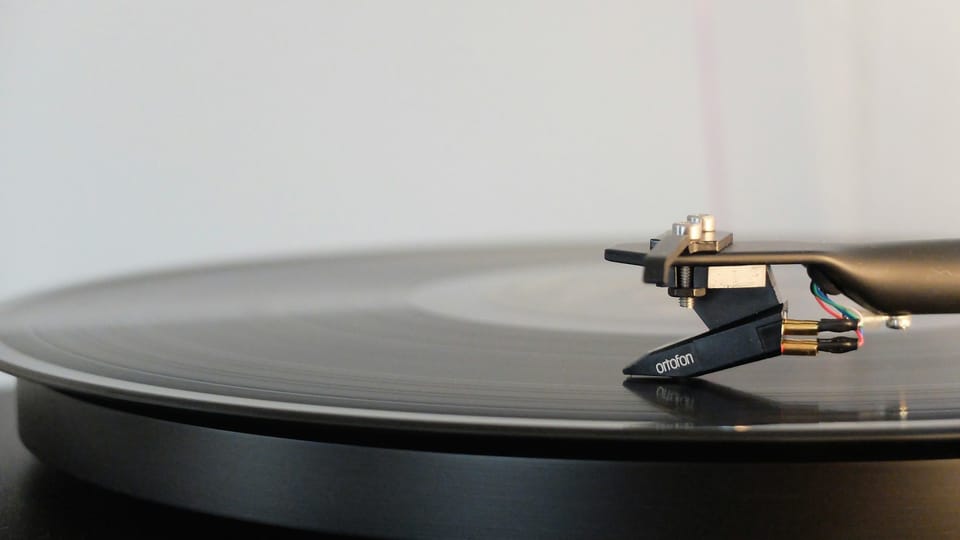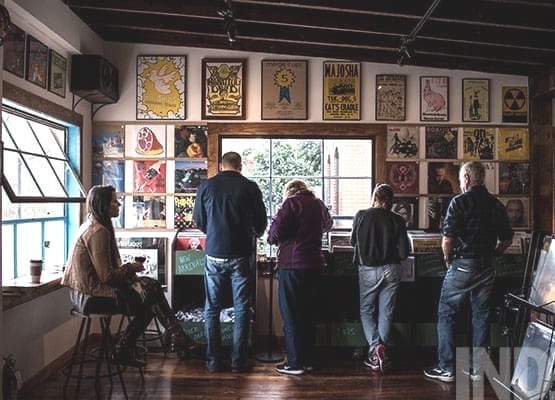The Vinyl Revival

Last weekend, I went to one my favorite places in our town: Volume Records & Beer. As you might expect, it's a vinyl records store with a nice craft beer bar. I browsed the selection with a drink in hand and picked up a copy of slouvaki by Slowdive and All These Years by Phil Cook.
While I walked home, I reflected on the paradox of my music consumption habits. In my pocket I have access to millions of songs through Apple Music and Spotify. But, I just spent $50 on two albums – a form that is decidedly less convenient, but more tactile and intentional.

This personal experience mirrors a broader trend that's been gaining momentum over the past decade. According to Spotify's Q2 2024 earnings report, the streaming giant now boasts 626 million monthly active users and 246 million premium subscribers, representing year-over-year growth of 14% and 12% respectively. Yet, concurrently, vinyl sales have been surging.
The Recording Industry Association of America (RIAA) reports that in 2023, vinyl records outsold CDs for the second year running. People bought 43 million vinyl records last year, which is 6 million more than the number of CDs sold. Vinyl sales generated $1.4 billion in revenue, compared to $537 million from CDs. This marks the second time since 1987 that vinyl has outpaced CDs, reflecting a steady 17-year growth trend in vinyl sales.
A Theoretical Lens
This seemingly contradictory phenomenon of rising streaming use and rising vinyl sales can be understood through several academic lenses. Han and Newman, in their study "Seeking stability: Consumer motivations for communal nostalgia," argue that one reason consumers are drawn to communal nostalgia is that it can provide a sense of social stability. Drawing on System Justification Theory, they show that perceived threats to the social system increase consumer demand for communal nostalgia and enhance the joy consumers get from certain retro products.
Complementing this perspective, Schauman et al. in "Crafting customer insight: What we can learn from the revival of the vinyl record" suggests that the resurgence of vinyl represents more than just a trend. They argue it reflects a changing relationship with music and technology, highlighting a desire for more intentional, engaging, and potentially more sustainable ways of consuming music.
Another critical aspect of this phenomenon is explored in Chiara Longo's "An Analysis of Choice Overload Effects on the User Experience of Subscription-based Streaming Services." This study examines how the vast array of options provided by streaming services can lead to decision fatigue and reduced satisfaction among users. The overwhelming choice paradoxically may drive some consumers back to the more limited, but potentially more satisfying, experience of vinyl records.
While streaming dominates the market, accounting for 84% of music revenue (about $14.4 billion), physical media takes a growing 11% share. This suggests that many consumers are seeking a balance between the convenience of streaming and the tangible, ritualistic experience of vinyl.
As Jack Webster argues in "Taste in the platform age: music streaming services and new forms of class distinction," we need to treat music streaming services not just as technological artifacts but as dynamic socio-technical systems that actively intervene in our everyday listening experiences. The vinyl revival suggests that these interventions may sometimes leave consumers feeling disconnected or unstable, driving them to seek out more tangible, ritualistic forms of music consumption.
Insights for Designers
For digital product designers and developers, the growing popularity of vinyl records offers valuable insights:
- The importance of tangibility: Even in digital products, consider ways to create a sense of ownership and physicality.
- The value of curation: In a world of endless choice, help users create meaningful collections and rituals.
- The power of intentionality: Design features that encourage mindful, focused engagement rather than passive consumption.
- The appeal of imperfection: Don't underestimate the charm of the analog, the handmade, the imperfect in a digital (an AI-mediated) world.
- The need for balance: Consider how your digital product can complement, rather than replace, valuable analog experiences.
These insights reflect the complex relationship between digital convenience and analog experience that the vinyl revival represents. They suggest that while consumers value the endless libraries and instant access of streaming services, they also crave the intentional, tactile, and sometimes imperfect experiences of physical mediums, like vinyl provides.
The vinyl revival in the age of streaming underscores a fundamental truth: technology should enhance our experiences, not replace the aspects of life that bring us joy and meaning. Humans crave connection, ritual, tangibility, and a sense of stability. The future of music consumption - and perhaps digital products in general - likely lies in finding the right balance between the infinite accessibility of the digital and the focused, tactile experience of the physical.





Member discussion